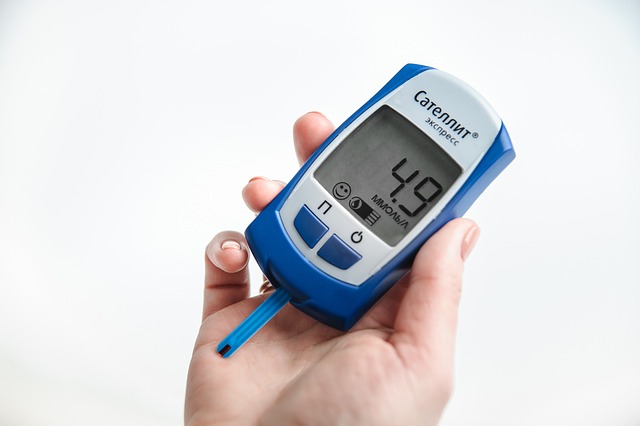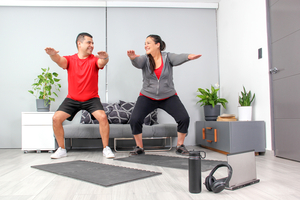Have you been diagnosed with prediabetes, have weight gain, or higher-than-normal blood sugar? That could be one of the luckiest things that ever happen to you! Of course you do not want prediabetes, but your awareness gives you an edge over millions of Americans. Consider this:
- More than 84 million other Americans have prediabetes, also known as borderline diabetes.
- Only 1 in 9 of them are aware of it and are getting care for it.
- The other 8 in 9 are likely to develop type 2 diabetes within a few years without treatment.
You are among the few adults who know about their prediabetes and are ready to treat it. Not only that, but the most effective treatment for most people with prediabetes is simple, usually involving no medications. Because prediabetes is likely to be tied with weight gain, obesity management is a highly effective way to treat prediabetes.
Obesity, Weight Gain, and Prediabetes
Obesity is all-too-familiar. It is having a weight that is disproportionately high compared to your height. It is defined as having a body mass index (BMI) over 30. You can check your BMI here if you know your height and weight.
Obesity is a health risk because it can change the way your body functions. People who are obese have a higher risk for:
- Heart disease
- Hypertension
- Stroke
- Kidney disease
- Certain types of cancer
- Arthritis
- Alzheimer’s disease
- Prediabetes, also known as borderline diabetes
- Diabetes
Prediabetes is a condition with abnormally high blood sugar, but not as high as in diabetes. Prediabetes is also likely to be tied with weight gain. Your doctor may have told you that you have prediabetes if you got one of the following results on a blood test.
- Fasting blood sugar 100 to 124 mg/dl
- Glycated hemoglobin (A1C) 5.7to 6.4%
- Oral glucose tolerance test (OGTT) 140 to 199 mg/dl
Be sure to ask your doctor for a prediabetes test if you have not had one recently. They are inexpensive, easy, and potentially life-saving.
Insulin Resistance and The Link Between Weight Gain and Prediabetes
Weight Gain and Prediabetes
Obesity, or weight gain, and prediabetes are linked because of a condition called insulin resistance, or reduced sensitivity. Obesity is a common cause of insulin resistance. Insulin resistance leads to higher blood sugar, weight gain and prediabetes.
The key factor here is insulin. Insulin is a hormone that is produced by beta cells in your pancreas. It has a few roles in lowering blood sugar or blood glucose.
- Helps get glucose or sugar get from your bloodstream into your muscle and fat cells after a meal
- Prevents your liver from releasing sugar into your bloodstream when you already have enough
- Helps your liver store extra glucose after a meal for use later when your muscles need it for energy
Being obese can interrupt this process of glucose regulation. It can lead to insulin resistance, or reduced insulin sensitivity. That means the sugar in your blood is less able to get out of your bloodstream and into the cells that depend on insulin. The result is higher blood sugar, or prediabetes.
With prediabetes comes a high risk for developing type 2 diabetes. With diabetes comes:
- The likelihood of measuring blood sugar at home one or more times daily
- The likelihood of needing oral or injectable medications
- A high risk of complications, including neuropathy, blurry vision, and heart and kidney disease
How Increase Reduced Insulin Sensitivity Naturally
That is heavy stuff. Are you ready for the good news? There are several ways to increase reduced insulin sensitivity naturally. Weight loss has been shown to lower risk for type 2 diabetes. In a famous clinical trial among patients with prediabetes, weight loss lowered risk of diabetes by over 50% in:
- Men and women 25 years and older
- Patients with BMI of 22 (a “normal” weight) through a BMI over 35
- White, African American, Hispanic, American Indian, and Asian participants
Losing weight worked for those groups of people. It may work for you!
You do not even need to lose that much weight to get benefits. A couple of pounds can lead to a lower risk. If you can hit a loss of 5 to 7% of your body weight, your risk can drop by over 50%. That works out to a loss of:
- 8 to 11 lb. if you weigh 150 lb.
- 9 to 12 lb. if you weigh 170 lb.
- 10 to 14 lb. if you weigh 200 lb.
Oh, there is a catch: it is most effective if you can not only lose the weight, but also keep it off. So, here are some tips for realistic, long-term weight loss.
A Few Calories At A Time
The most effective way to lose weight is to reduce the number of calories you consume. You get calories from food and some beverages. You do not need to cut back by too much to lose weight. If you can build up a deficit of 100 or more calories a day, you will lose weight gradually and eventually hit your goals.
Good and Bad Foods For Obesity Management
Best foods for obesity management tend to:
- Be filling. Big foods with small amounts of calories (low calorie-density) let your stomach feel full when your meal or snack is over.
- Chunky soup
- Salad
- Fruit salad
- Egg white omelet
- Slow down your eating. High-fiber foods tend to require a lot of effort to chew and that can help you feel more satisfied on less food.
- Broccoli and other vegetables
- Beans and other legumes
- Apples and other fruit
- Take a long time to digest. Protein and healthy fats are slower to metabolize than most types of carbohydrates, so you can stay full for longer after a meal if you include protein or fat.
- Lean proteins such as fish, tofu, egg whites, skinless chicken or turkey
- Non-fat cottage cheese
- Small servings of healthy fats such as avocados and nuts.
- Be less processed. Less-processed foods are usually higher in nutrients and lower in extra calories from sugars and other additives
- Fresh fruit and vegetables
- Whole grains
- Fresh poultry
Worst foods for obesity management tend to:
- Be calorie-dense. High calorie density means a food or beverage has a lot of calories and a small serving size.
- Piece of cake
- A few slices of bacon
- A scoop of potato salad
- Be quick to eat. Melt-in-your-mouth foods give you a lot of calories quickly and are not good at filling you up.
- Shakes and smoothies
- Candy
- Ice cream
- Creamy soups
- Fatty dips and spreads
- Pasta primavera
- Have extra fats, sugars, or starches. These additions often come during processing of packaged foods or during fast food preparation.
- French fries
- Breaded fried chicken
- Other fried foods
- Sugar-sweetened flavored cereal, oatmeal, and yogurt
- Be more processed. Processed foods tend to be less filling and often higher in calories.
- Pizza
- Macaroni and cheese
- Potato chips
- Frozen dinners
- Baked goods
- Fruit juices
Find Your Personality-Based Plan for Obesity Management and Prediabetes Treatment
Let’s make obesity management easier by building your weight loss plan base on your weight loss personality. See which of these three strategies is the best match for you and see if you can adapt it for your lifestyle.
- “I like freedom.”
- “I don’t want to be hungry.”
- “I’d like to only eat my foods.”
Personality 1: “I like freedom.”
This is a simple one. The basic rule is to fill half of your plate with vegetables at most meals and snacks. The rest of your plate (or bowl) can contain what you would normally eat. The guidelines are:
- Eat the vegetables first (when you can) so you fill up on them before eating higher-calorie foods
- Choose lettuce, greens, or other non-starchy vegetables
- Serve them raw or cooked without fat (steamed, grilled, or roasted, for example)
Examples of Dishes
- Egg, tofu, chicken or fish with vegetables
- Spaghetti and sauce with vegetbles
- Soup
- Salad
Personality 2: “I don’t want to be hungry.”
Okay, then eat more! Choose lower-calorie-dense foods instead of higher-calorie-dense ones, and you will fill up on fewer calories. In general, higher-fiber, higher-water, lower-sugar, lower-fat foods tend to be bigger. Here are some examples of making your food bigger.
Personality 3: “I want to eat my foods.”
That works! Just cut back a bit on the higher-calorie ones, and balance it out by adding some lower calorie ones. For example…
- Take fewer chips and more celery to dip as a snack
- Serve less cereal and add more fresh fruit for breakfast
- Have less starch (potato, rice, or pasta) as a side, and add an extra serving of vegetables
- Cut your slice of cake or pie in half, and eat it with fresh fruit or cottage cheese
- Have 1 instead of 2 slices of pizza, and add a side salad or steamed vegetables to round out your meal
Type of Diet – Low-Carb, Low-Fat, or What??
Actually, whatever works for you is okay. The best diet is one that you can enjoy and maintain for a long time. It should include a variety of foods and nutrients. The research shows that the type of diet is not really all that important as long as you stick to whatever plan you choose.
That said, choose something sensible. Diets that do not work or are unhealthy generally include:
- Meal replacement – eating cookies or shakes instead of meals
- Food groups/items – depending on, for example, “special foods” such as cabbage soup or grapefruit for most meals
- Detox/cleanse – Fasting, often while taking a possibly dangerous detox blend or sugary juice, without building long-term healthy habits
- Timed diets (15-day, 30-day) – they will probably work for 15 or 30 days…then what?
Exercise and Weight Loss
Exercise burns calories and has a wealth of health benefits, including being extremely effective at improving insulin sensitivity and lowering blood sugar in diabetes, weight gain and prediabetes. Research shows that exercise is best as part of a weight maintenance strategy to prevent regaining your weight. Exercise itself does not tend to lead to weight loss.
The general recommendation for prediabetes and other conditions is to aim for 150 minutes per week of moderate-intensity exercise. You can get more health and weight control benefits from doing more. Research shows that people who are able to keep off the weight they lost sometimes hit 60 minutes on most days.
Obesity management is an important part of prediabetes treatment for most patients. It can lower blood sugar and dramatically reduce the risk of type 2 diabetes. You can lose weight with small daily changes, healthy foods and portion sizes, and help from a smartphone coach such as Lark DPP.











.webp)






